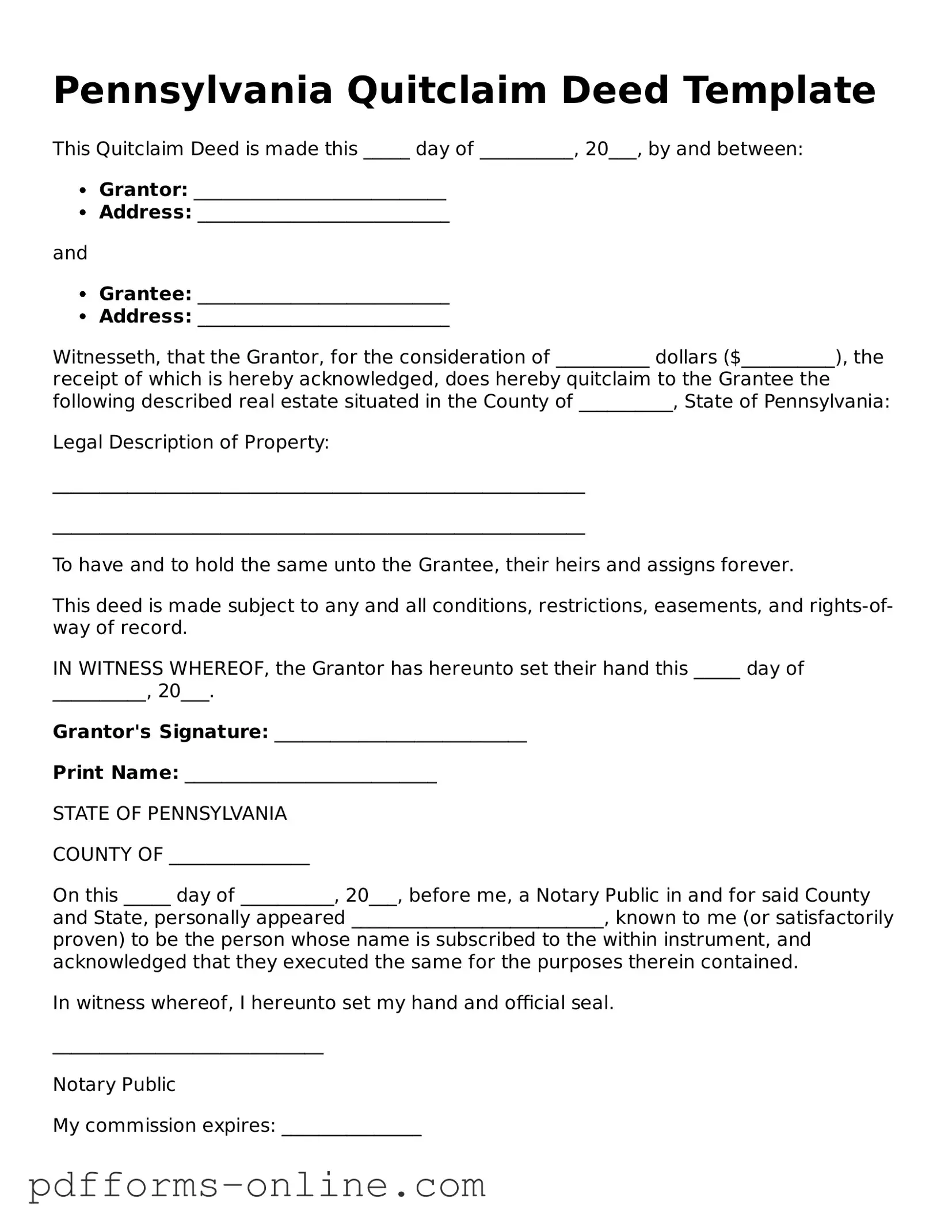Pennsylvania Quitclaim Deed Template
This Quitclaim Deed is made this _____ day of __________, 20___, by and between:
- Grantor: ___________________________
- Address: ___________________________
and
- Grantee: ___________________________
- Address: ___________________________
Witnesseth, that the Grantor, for the consideration of __________ dollars ($__________), the receipt of which is hereby acknowledged, does hereby quitclaim to the Grantee the following described real estate situated in the County of __________, State of Pennsylvania:
Legal Description of Property:
_________________________________________________________
_________________________________________________________
To have and to hold the same unto the Grantee, their heirs and assigns forever.
This deed is made subject to any and all conditions, restrictions, easements, and rights-of-way of record.
IN WITNESS WHEREOF, the Grantor has hereunto set their hand this _____ day of __________, 20___.
Grantor's Signature: ___________________________
Print Name: ___________________________
STATE OF PENNSYLVANIA
COUNTY OF _______________
On this _____ day of __________, 20___, before me, a Notary Public in and for said County and State, personally appeared ___________________________, known to me (or satisfactorily proven) to be the person whose name is subscribed to the within instrument, and acknowledged that they executed the same for the purposes therein contained.
In witness whereof, I hereunto set my hand and official seal.
_____________________________
Notary Public
My commission expires: _______________
